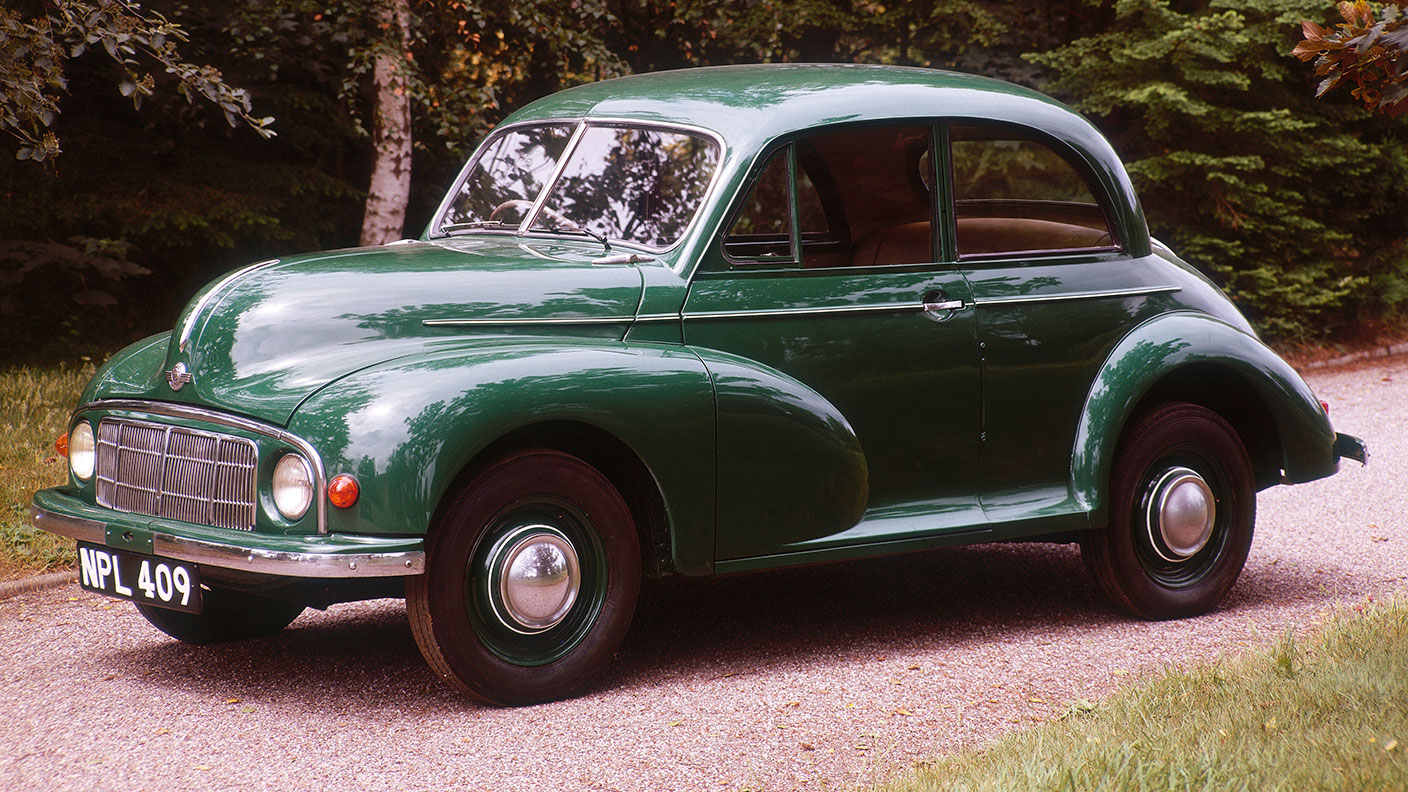
When it came to affordable post-war motoring, Germany had the VW Beetle, France had the Citroen 2CV, and Britain had the Morris Minor – the first of which rolled off the production line on this day in 1948.
The “Moggy” was designed by Alec Issigonis, who would go on to design the Mini, and was an exercise in cramming the most seating space into the smallest-sized body. It had a 918cc engine producing a whopping 27HP, could hit a top speed of 64MPH and had a 0-60 time of over 50 seconds. It was remarkably frugal, however, racking up 40 miles to the gallon – something the public appreciated in the austere post-war years.
The original Minor MM was unveiled to the public to much acclaim at the Earls Court Motor Show on 27 October 1948. It was available as a two-door saloon and a convertible tourer. The four-door arrived two years later, followed by the Traveller, splendidly bedecked in wood; and the van, workhorse of the Post Office, in 1953.
MoneyWeek
Subscribe to MoneyWeek today and get your first six magazine issues absolutely FREE

Sign up to Money Morning
Don't miss the latest investment and personal finances news, market analysis, plus money-saving tips with our free twice-daily newsletter
Don't miss the latest investment and personal finances news, market analysis, plus money-saving tips with our free twice-daily newsletter
The original MM was produced from 1948 to 1952, in which time just over a quarter of a million were sold – a third of those were the convertible version. That was followed by the Series II model, produced between 1952 and 1956, and the Minor 1000, produced from 1956. The 1000 made use of such advanced technology as modern indicators, doing away with the pop-out semaphore arms of the earlier models.
In February 1961 it became the first British car to sell more than a million, and by the time production of the saloon version ended in 1970, over 1.3 million had been built. Production of the Traveller and vans ended in 1972.
It is still surprisingly popular, however – there are some 15,000 Minors of all stripes on the roads today (compare that with its successor, the abominable Morris Marina: out of the 1.2 million built, fewer than 400 survive).
The Morris Minor is no longer a particularly cheap car to buy, however. If you're looking to buy a decent example now, you'll have to fork out anything around £15,000. With that, you could buy a Dacia Sandero, currently the cheapest new car on sale in Britain.
Get the latest financial news, insights and expert analysis from our award-winning MoneyWeek team, to help you understand what really matters when it comes to your finances.
Ben studied modern languages at London University's Queen Mary College. After dabbling unhappily in local government finance for a while, he went to work for The Scotsman newspaper in Edinburgh. The launch of the paper's website, scotsman.com, in the early years of the dotcom craze, saw Ben move online to manage the Business and Motors channels before becoming deputy editor with responsibility for all aspects of online production for The Scotsman, Scotland on Sunday and the Edinburgh Evening News websites, along with the papers' Edinburgh Festivals website.
Ben joined MoneyWeek as website editor in 2008, just as the Great Financial Crisis was brewing. He has written extensively for the website and magazine, with a particular emphasis on alternative finance and fintech, including blockchain and bitcoin.
As an early adopter of bitcoin, Ben bought when the price was under $200, but went on to spend it all on foolish fripperies.
-
 How gifting money this Christmas could lower your inheritance tax bill
How gifting money this Christmas could lower your inheritance tax billCash is an easy and quick present to give over Christmas – and it could protect some of your estate from the taxman down the line
-
 £100 contactless card limit to be lifted
£100 contactless card limit to be liftedConsumers will be able to set their own contactless limits from March 2026, under new rules from the Financial Conduct Authority
-
 31 August 1957: the Federation of Malaya declares independence from the UK
31 August 1957: the Federation of Malaya declares independence from the UKFeatures On this day in 1957, after ten years of preparation, the Federation of Malaya became an independent nation.
-
 13 April 1960: the first satellite navigation system is launched
13 April 1960: the first satellite navigation system is launchedFeatures On this day in 1960, Nasa sent the Transit 1B satellite into orbit to provide positioning for the US Navy’s fleet of Polaris ballistic missile submarines.
-
 9 April 1838: National Gallery opens in Trafalgar Square
9 April 1838: National Gallery opens in Trafalgar SquareFeatures On this day in 1838, William Wilkins’ new National Gallery building in Trafalgar Square opened to the public.
-
3 March 1962: British Antarctic Territory is created
Features On this day in 1962, Britain formed the British Antarctic Territory administered from the Falkland Islands.
-
10 March 2000: the dotcom bubble peaks
Features Tech mania fanned by the dawning of the internet age inflated the dotcom bubble to maximum extent, on this day in 2000.
-
9 March 1776: Adam Smith publishes 'The Wealth of Nations'
Features On this day in 1776, Adam Smith, the “father of modern economics”, published his hugely influential book The Wealth of Nations.
-
 8 March 1817: the New York Stock Exchange is formed
8 March 1817: the New York Stock Exchange is formedFeatures On this day in 1817, a group of brokers moved out of a New York coffee house to form what would become the biggest stock exchange in the world.
-
7 March 1969: Queen Elizabeth II officially opens the Victoria Line
Features On this day in 1969, Queen Elizabeth II took only her second trip on the tube to officially open the underground’s newest line – the Victoria Line.

